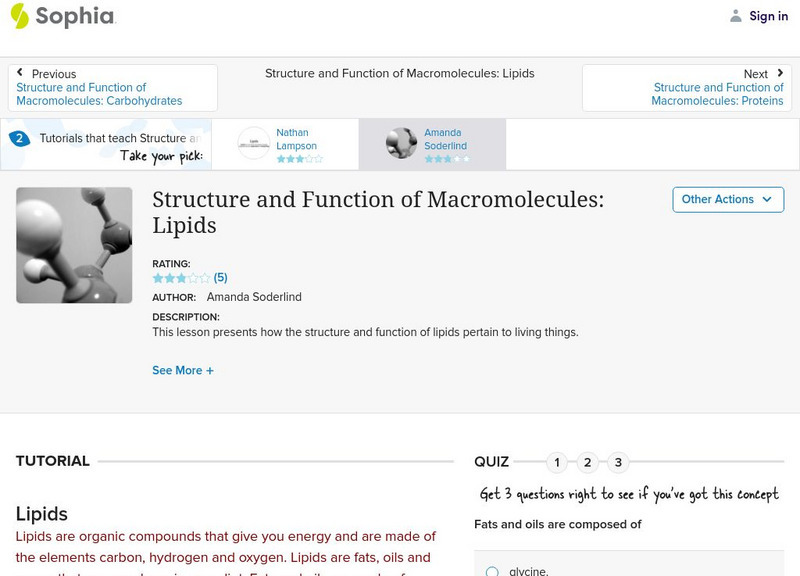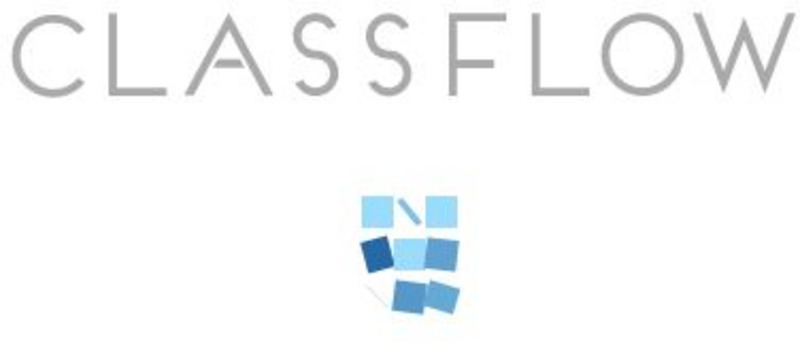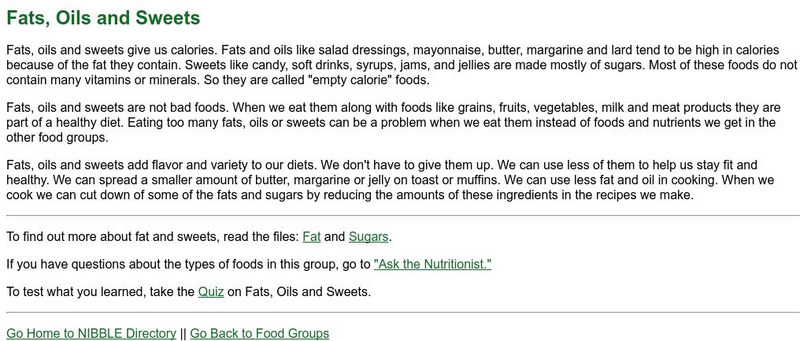Other
Dr. Paul's Virtually Biology Show: Tri Glycerides
This site from the Dr. Paul's Virtually Biology Show provides very good information on tri-glycerides. Includes a definition, diagram, their importance and much more.
PBS
Pbs Teachers: Scientific American: Superhumans and Bionics: A Heart of Titanium
Explore how to keep your heart healthy by exercising regularly, sticking to a low-fat diet and not smoking. Use mathematics to understand nutritional information about various foods.
Sophia Learning
Sophia: Structure and Function of Macromolecules: Lipids: Lesson 2
This lesson presents how the structure and function of lipids pertain to living things. It is 2 of 2 in the series titled "Structure and Function of Macromolecules: Lipids."
US Department of Agriculture
Choose My Plate: What Are Oils
This website defines "oils" and provides examples. It also names some of the uses for oils as well as sources.
Precision Nutrition
Encyclopedia of Food: Fats
An entry featuring the benefits and drawbacks to consuming fats. Are there good fats? What happens if too many fats are eaten?
ClassFlow
Class Flow: Healthy Eating Activity 3: Composite Dishes
[Free Registration/Login Required] This flipchart supports lessons from the Food - a fact of life website. Pupils will be able to identify a healthy meal working out what are the key ingredients for the meals presented.
ClassFlow
Class Flow: Healthy Eating Activity 4: Energy
[Free Registration/Login Required] This flipchart supports lessons from the 'Food - a fact of life' website. Pupils will be able to understand why their bodies need energy, how much energy is in certain food types and who needs more...
PBS
Pbs Teachers: Smarter Food Processing Techniques
Test your knowledge about the foods you eat by taking a short quiz. Match products to their ingredients, answer questions about nutritional values and compute the amount of fruits and vegetables consumed per year.
Science4Fun
Science4 Fun: Lipids
Learn interesting facts about the four types of lipids: fats, phospholipids, steroids, and waxes.
Mocomi & Anibrain Digital Technologies
Mocomi: Importance of Health and Hygiene
Explains the difference between health and hygiene. Discusses the five components of food and the importance of a balanced diet and exercise. Also, provides steps to maintain good hygiene.
University of Massachusetts
University of Massachusetts: Fats, Oils and Sweets
At this site from the University of Massachusetts there is a very brief write-up on the foods that should be consumed as little as possible: fats, oils, and sweets. After reading about these foods, take a short quiz to test your knowledge.







